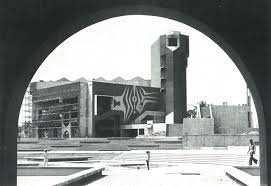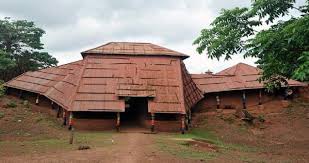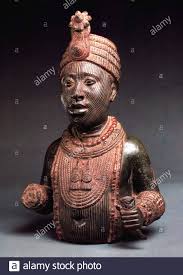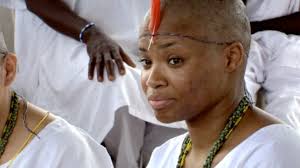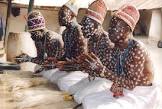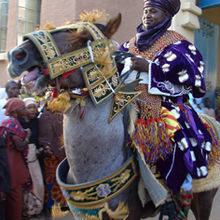Yoruba history – Things you might need to know
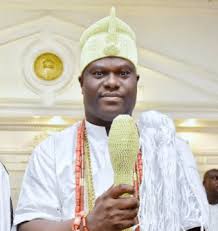
The history of the people of Yoruba kingdom
Yoruba history narration shows that Yoruba people begins in Ile-Ife. This kingdom was founded by the deities Oduduwa and Obatala, who are believed to have created the world. Oduduwa was the first divine king of the Yoruba people, and Obatala fashioned the first human beings out of clay. It is said the Yoruba people believe that their civilization began at Ile-Ife where the gods descended to earth. The Ethnic group became popular internationally due to their trading with the Portuguese which gave them guns for their trade. The Yoruba were invaded by the Fulani in the early 1800s, which pushed the people to the South. In the late 1800s, they formed a treaty with the Fulani people and were colonized by the British in 1901.
The early settlers – Yoruba history
Yoruba history reveal that the people who lived in Yorubaland at least by the seventh century BC, were not initially known as the Yoruba, although they shared a common ethnicity and language group. The historical Yoruba develop in situ, out of earlier (Mesolithic) Volta-Niger populations, by the 1st millennium BC. Archaeologically, in Yoruba history, the settlement at Ile-Ife can be dated to the 4th century BC, with urban structures appearing in the 8th-10th Centuries. “Between 700 and 900 A.D. the city began to develop as a major artistic center,” And “by the 12th Century Ife artists were creating bronze, stone, and terracotta sculptures.” The phase of Ile-Ife before the rise of Oyo, ca. 1100–1600, is sometimes described as a “golden age” of Ile-Ife.
Oyo Empire in Yoruba history
Ife was surpassed by the Oyo Empire as the dominant Yoruba military and political power between 1600 and 1800 AD. The nearby Benin Empire was also a powerful force between 1300 and 1850. Oyo developed in the 17th century and become one of the largest Yoruba kingdoms, while Ile-Ife remained as a religiously significant rival to its power at the site of the divine creation of the earth in Yoruba mythology. Yoruba history believed in Oduduwa’s ascension in Ile-Ife, he had a son. This son later became the first ruler of the Oyo Empire.
Yoruba history emphasized on the subjugation of Dahomey by oyo kingdom. It traded with European merchants on the coast through Ajase, the wealth of the empire increased, and its political leaders wealth increased as well. This state of affairs continued until Oba Abiodun, Oyo’s last great ruler, engaged his opponents in a bitter civil war that had a ruinous effect on economic development and the trade with the European merchants. The downfall of the kingdom came soon after, as Abiodun became concerned with little other than the display of royal wealth. Oyo’s empire eventually collapsed in 1830s according to Yoruba history.
Like Oyo itself, most of the surrounding city states were controlled by Obas, elected priestly monarchs, and councils made up of Oloyes, recognised leaders of royal, noble, and often even common descent, who joined them in ruling over the kingdoms through a series of guilds and cults, according to Yoruba history. Different states saw differing ratios of power between the kingship and the chiefs’ council. Some, such as Oyo, had powerful, autocratic monarchs with almost total control, while in others such as the Ijebu city-states, the senatorial councils were supreme and the Ọba served as sometimes as figurehead. In all cases, however, Yoruba monarchs were subject to the continuing approval of their constituents as a matter of policy, and could be easily compelled to abdicate for demonstrating dictatorial tendencies or incompetence. The order to vacate the throne was usually communicated through an aroko or symbolic message, which usually took the form of parrots‘ eggs delivered in a covered calabash bowl by the Oloyes.
Religion – Yoruba history
Yoruba history established that there are about 401 deities. The Yoruba deities are called Orishas while God Almighty is called Olorun. Yoruba’s believe that when they die, they go to the realm of ancestors where they can still have influence on events taking place on earth.
The people and the culture
Yoruba history maintained Yoruba people remain as one of the largest ethnic groups in Nigeria and in Africa continent. They constitute about 35% of Nigeria’s population and around 40 million individuals in and around West Africa. Although they are predominantly Christian or Muslim, a significant minority still follow their history of traditional practices and beliefs. Most of the Yoruba people take part in farm work. The men grow foods such as corn, yams, coco-yams, nuts, and cocoa, the last of which is a major cash crop. Men are also often traders and craftsmen as well. Yoruba history presented women to have been doing less work on the farms, but are important traders. Their status traditionally depends on that of their husbands. Women of rank, such as princesses and chiefs, are the exception to this however; their status has little to do with that of whomever they’re married to.
The people practice a number of cultural skills that are useful in everyday life like pottery, beadwork, weaving, metalwork, and mask making. The Yoruba were and are still known for their sculptors, beautiful clothing designs and patterns, and their food. Some of these foods included moin-moin ( steamed bean pudding), ila asepo (okra soup), and amala (yam flour). The ethnic group also holds musical and cultural festivals that are world famous, as reveal by Yoruba history.
The modern history
Yoruba history reported the people eventually established a federation of city-states under the political ascendancy of the city state of Oyo, located on the Northern fringes of Yorubaland in the savanna plains between the forests of present Southwest Nigeria and the Niger River. Following a Jihad led by Uthman Dan Fodio and a rapid consolidation of the Hausa city states of contemporary northern Nigeria, the Fulani Sokoto Caliphate invaded and annexed the buffer Nupe Kingdom. It then began to advance southwards into Ọyọ lands. Shortly afterwards, its armies overran the Yoruba military capital of Ilorin, and then sacked and destroyed Ọyọ-Ile, the royal seat of the Ọyọ Empire. Following this, Ọyọ-Ile was abandoned, and the Ọyọ retreated south to the present city of Oyo (formerly known as “Ago d’Oyo”, or “Oyo Atiba”) in a forested region where the cavalry of the Sokoto Caliphate was less effective. Further attempts by the Sokoto Caliphate to expand southwards were checked by the Yoruba who had rallied in defence under the military leadership of the ascendant Ibadan clan, which rose from the old Oyo Empire, and of the Ijebu city-states.
However, the Oyo hegemony had been dealt a mortal blow as presented by Yoruba history. The other Yoruba city-states broke free of Oyo dominance, and subsequently became embroiled in a series of internecine conflicts that soon metamorphosed into a full scale civil war. These events weakened the southern Yoruba’s in their resistance to British colonial and military invasions. In 1960, greater Yorubaland was subsumed into the Federal Republic of Nigeria. The historical records of the Yoruba, which became more accessible in the nineteenth century with the more permanent arrival of the Europeans, tell of heavy Jihad raids by the mounted Fulani warriors of the north as well as of endemic intercity warfare amongst the Yoruba themselves. Archaeological evidence of the greatness of their ancient civilization in the form of, amongst other things, impressive architectural achievements like Sungbo’s Eredo that are centuries old, nevertheless abound, Yoruba history revealed.
Major town, cities and diaspora
Yoruba history has it that Yoruba people organize themselves into villages, towns and cities in the form of kingdoms. Major cities include Ile-Ife, Oyo, Lagos, Ibadan, Ijebu-Ode and Akure. Some towns and cities of the Yoruba people are collectively considered to be clans due to similarities in their origins and cultures. A number of other cities, though non-Yoruba, have histories of being influenced by the Yoruba. These cities are Warri, Benin city, Okene, and Auchi.
The Yoruba diaspora has two main groupings according to Yoruba history. The first one is composed of the recent immigrants that moved to the United States and the United Kingdom after the political and economic changes in the 1960s and 1980s. The second group is much older, and is composed of descendants of kidnapped Yoruba who arrived as slaves to countries such as the United States, Cuba, Trinidad, Brazil, Grenada, and other countries in the Caribbean and South America in the 19th century. Yoruba history is diverse, rich and very interesting, one of the richest and educative history in the Africa continent.

